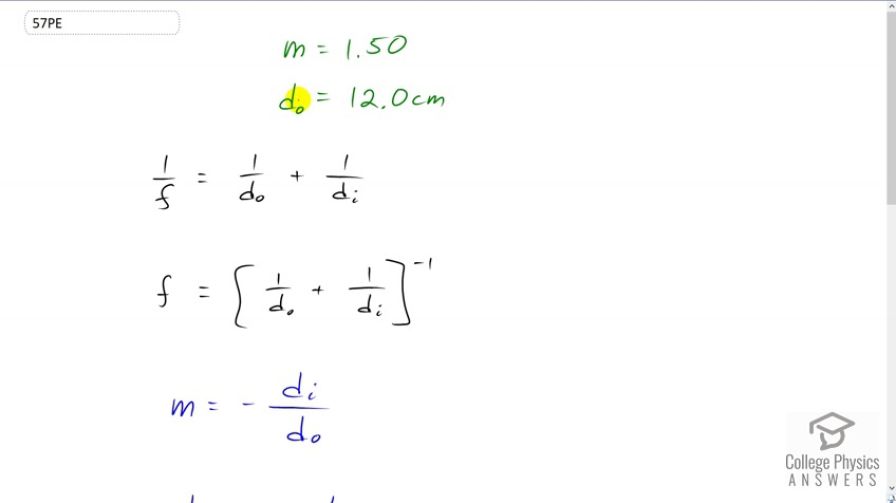Question
What is the focal length of a makeup mirror that produces a magnification of 1.50 when a person’s face is 12.0 cm away? Explicitly show how you follow the steps in the Problem-Solving Strategy for Mirrors.
Final Answer
Solution video
OpenStax College Physics, Chapter 25, Problem 57 (Problems & Exercises)

vote with a rating of
votes with an average rating of
.
Calculator Screenshots
Video Transcript
This is College Physics Answers with Shaun Dychko. A make-up mirror has a magnification of 1.5 when a person's face is 12 centimeters in front of the mirror, which means the object distance is 12 centimeters. Now, we have to find the focal length of the mirror and we'll use the thins lens equation. It's called the thin lens equation but we can use it for mirrors, too, which says one over focal length equals one over object distance plus one over image distance. And then, we can solve for F by raising both sides to the exponent negative one. Now, there's a problem with this formula in that we don't know what the image distance is but we can use a formula for magnification which is the negative Di over Do. That's image distance divided by object distance, that's the magnification. Then, we can solve this for image distance because we know both magnification and the object distance. So, we multiply both sides by negative Do and we get Di is negative magnification times object distance. And then, we substitute that in for the image distance in our formula for focal length. So, we have one over object distance minus one over magnification times magnification times object distance all to the negative one is going to be your focal length. And then, we can factor out this one over Do and then raise both of them to exponent negative one, and one over Do to the power of negative one is Do. And then, this bracket we can't do much with it unless we were to write it as a single fraction by multiplying this by M over M. But, in any case, I didn't do that. So, we have focal length is object distance times one minus one over magnification all to the negative one. So, that's 12 centimeters times one minus one over 1.50 to the negative one, giving a focal length of 36.0 centimeters.
